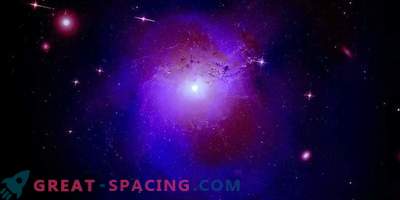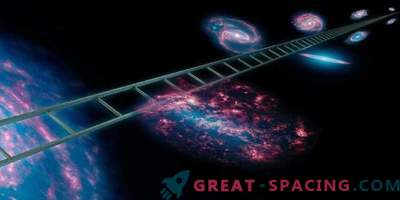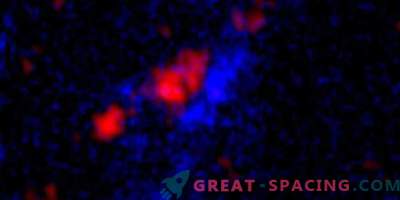
The picture shows Dark Energy Spectroscopy Instrument attached to the Mayall telescope at Kitt Peak National Observatory.
In 1998, scientists discovered that the universal expansion is accelerating. Physicists do not know why this is happening, but they brought out the mysterious force behind this phenomenon. It's about dark energy.
Researchers know a lot about the influence of dark energy, but it is still not clear what it represents. Cosmologists say that 68% of the entire energy of the universe must be made of material. One way to improve the management of dark energy and its effects is to create detailed maps of space, capturing expansion. Scientists, engineers and technicians are now engaged in the formation of a DESI spectroscopic instrument.
DESI will help create the largest three-dimensional map of galaxies today. It will be able to cover a third of the whole sky, stretching for 11 billion light years, and also record approximately 35 million galaxies and quasars. The map will measure the spectra of light coming from galaxies to determine their distance from the Earth. Other studies have formed maps that determine the lateral positions of galaxies in the sky, but the use of DESI will more accurately measure their distance. DESI is now installed on the Mayall 4-meter telescope at the Kitt Peak National Observatory (Tucson, Arizona). Upon completion of the installation, he plans to work 5 years. Managed by the Lawrence Berkeley National Laboratory in California. Also connected to the work of the staff of the Fermi Laboratory, who created the barrel DESI corrector. This is a barrel that resembles an English phone booth. Her role is to keep 6 giant lenses in perfect alignment. It is important to ensure perfect accuracy, so the barrel is designed so that the lenses are located within the width of a human hair.
Also, Fermi Laboratory has created large structures that will support the cell around the trunk. They were taken to Mayall in April and have already begun installation. To transform galactic light into digital information for analysis, DESI will use high-tech versions of familiar components in conventional hand-held cameras. Technicians have already tested these highly sensitive devices before shipping to Tucson.
The collection of galactic light will take 5000 DESI fiber optic cables that will help record the spectra of each galaxy. Approximately 20 minutes of recording will be allotted to each object, then the telescope moves to a new celestial location. Now scientists are creating software that tells the tools where to move the fibers. In order to understand the collected spectra, researchers need to keep detailed reports on the instrument and the state of the telescope. Therefore, an electronic log and database is created to store the operational information of the instrument control systems. They will be used to track information about the systems necessary for the operation of DESI.
DESI predecessor is the DECam dark energy camera, which is now installed on the Victor Blanco Chilean telescope. The construction of the chamber was completed in 2012 to be used in a 5-year study. The new project DESI will improve the understanding of the nature of dark energy, using the results of the study of dark energy as a baseline. The last parts of the device are going to be installed by April 2019, and the first light mining is in May.











































